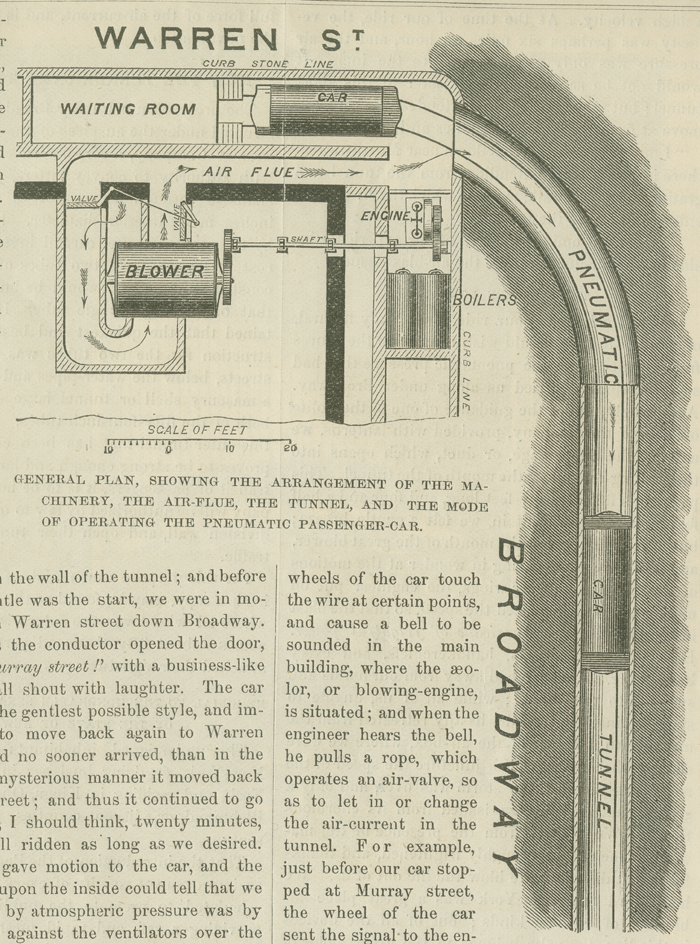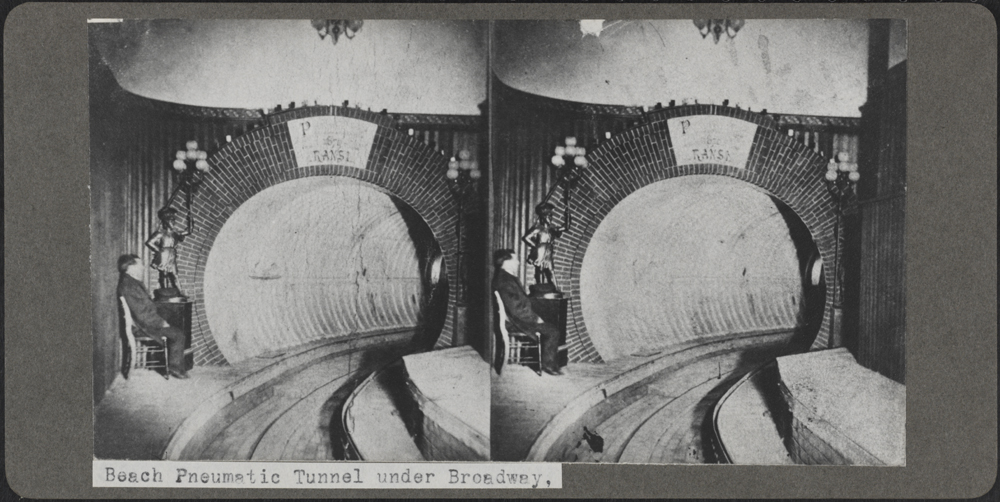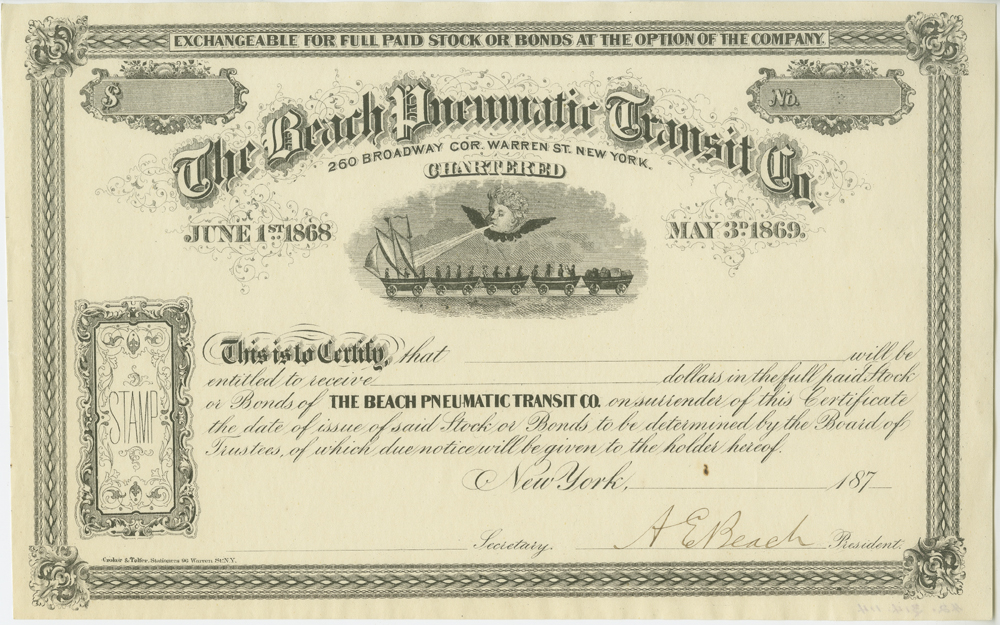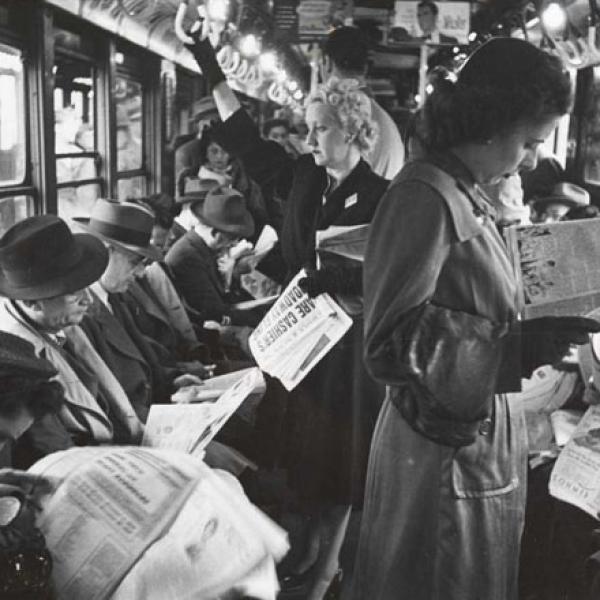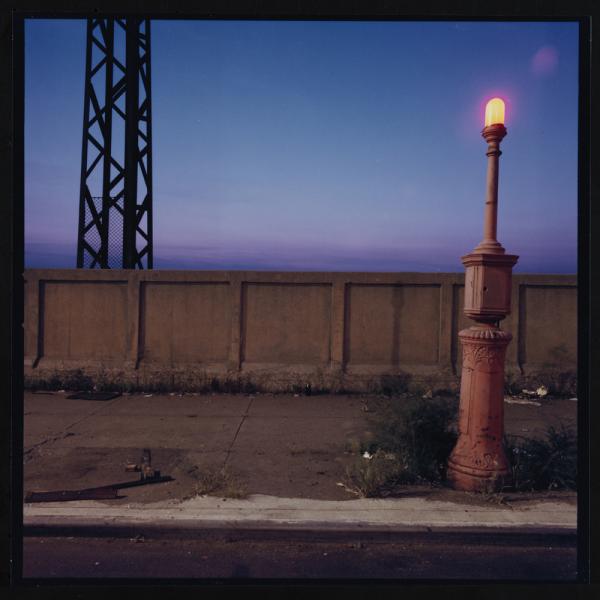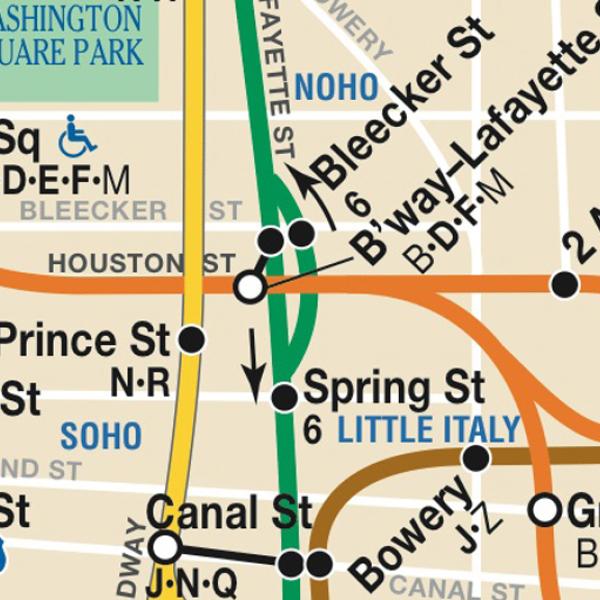The Beach Pneumatic Transit Company – just a bunch of hot air?
Tuesday, September 18, 2012 by
My alarm didn’t go off this morning, meaning I overslept and I did not have enough time to ride my bicycle into work as I often do, and instead would have to take the subway. While the weather has recently been quite pleasant, people often ask me how I can bear to ride my bike on those summer days when temperatures climb into the 90’s, and my response is always to ask how they can stand to wait on subway platforms as immense waves of hot air roll down the tracks in the wake of the trains. As I was reading on the way in, I came across a review for Taras Grescoe’s Straphangers, a new book about public transportation. The review mentions the inclusion of “a subway prototype, from 1870, constructed inside a huge pneumatic tube” in New York. In other words, an underground train whose motion was controlled entirely by forcing air through the tunnel.
Secret, forgotten, and out of commission subway tunnels and stations have always been intriguing to me, and I assume, (though perhaps incorrectly), for most New Yorkers. Therefore, many of you may already know this is a reference to the pneumatic underground railway conceived by Alfred Ely Beach, in 1869, in response to the ever growing traffic and congestion on New York City streets, especially Broadway. Beach’s underground railway ran just the length of one block under Broadway, between Warren to Murray Streets.
The rail line was built primarily as a demonstration of how such a system could work, and employed a 48-ton blower to move the train down the tracks. When the train reached the end of the line at Murray Street, the baffles on the blower were reversed, drawing the train car back toward Warren Street.
The entrance to the station was through the Devlin Stores, in what was later known as the Rogers, Peet & Co building. The station and passenger car were both very elegant, with mirrors, fountains, and saloons for ladies and gentlemen in the station; and the car featured comfortable, upholstered seats for 22 people. When the number of riders exceeded 22, a large platform car with a wooden sail at one end was used instead, where passengers sat upon comfortable settees, which accommodated up to 30 passengers.
Despite the popularity of Beach’s railway, selling 25-cent rides to over 400,000 people during its first year of operation, it remained little more than a novelty. Beach fought Tammany Hall for over two years as he tried to pass a bill introduced to the New York State Legislature to extend the line all the way to Central Park. The bill finally passed in 1873, only to face funding problems both from waning public interest, and the stock market crash that led to the Panic of 1873. Eventually, Beach abandoned the project. This blank stock certificate below is probably one of many that sat unused as financiers drifted away.
The tunnel was sealed, and after the Rogers, Peet, and Co. building was lost to fire in 1898, the Beach Pneumatic Railway was all but forgotten. In 1912, workers excavating for a line of the Brooklyn-Manhattan Subway encountered the sealed tunnel; inside, Beach’s rail car sat on the tracks, nearly intact.
This photo in the Museum’s collection showing an excavation site off Broadway between Duane and Reade streets claims to reveal a portion of the Beach Pneumatic tunnel. Based on the location of the tunnel a full two blocks south of this site, and the upright walls, rather than the round walls necessary for constructing a tube shaped tunnel, I’m not convinced that this is part of the Beach tunnel. This leads us to the question, of course – what is it then? Just another piece of the secret, lost, or forgotten infrastructure of New York City.
Click on this links to view more images of subway scenes and tunnels from the Museum’s collections. These images are all available in various sizes as museum quality archival prints. If you see something you want to hang on your wall, email us at reproductions@mcny.org
